7 Easiest Mushrooms to Grow in Garden Beds
Mushrooms have long been a fascination for many, not only for their unique flavors but also for their myriad health benefits.
In recent years, growing your own mushrooms has surged in popularity, and many people have ventured into giving them a go in their own backyard. Once you get past the learning curve and become more comfortable, you start getting adventurous in growing different types of mushrooms.

This blog may sound a bit intimidating, but don't get discouraged when you encounter words like mycelium spawn, pasteurized straw, and substrate. It's all part of the learning curve, and the more you read about it, the better you'll understand how it works.
In this blog, we won't go into detail on how to grow; it will be more to give you an idea of the process. Each mushroom has a slightly different process and requirements, and the blog would be extremely long if we got detailed.
What you will get from the blog is a good idea of what are the easiest mushrooms to grow, how they grow, what they need, and how they look in the wild or at the store. All of these listed below are safe to eat.
Shiitake (Lentinula edodes)
Description: Rich, savory flavor, brown cap with lighter stem
How to grow: Shiitake mushrooms are typically grown on hardwood logs or sawdust blocks. To grow them on logs, you'll need freshly cut hardwood logs, preferably oak, beech, or maple. Holes are drilled into the logs, and shiitake spawn is inserted. The logs are then left in a shady, humid area for several months to allow the mycelium to colonize the logs. Once colonized, the logs are soaked in water to stimulate fruiting.
Alternatively, you can grow shiitake mushrooms on sawdust blocks. Sawdust is mixed with shiitake spawn and packed into plastic bags. These bags are then kept in a warm, dark environment until the mycelium fully colonizes the sawdust. Once colonized, the bags are exposed to light and humidity to initiate fruiting.
Special requirements: Shiitake mushrooms require a humid environment with proper ventilation and prefer temperatures between 55-75°F (13-24°C) with regular misting to maintain humidity levels. Logs or sawdust blocks should be kept in a shaded area away from direct sunlight, to allow growth.
King stropharia (Stropharia rugosoannulata)

Description: Large, brown cap with lighter gills, wine-like aroma.
How to grow: King stropharia mushrooms can be grown in outdoor beds made of a mixture of compost, straw, and hardwood chips. The spawn is mixed thoroughly with the compost mixture and then spread evenly in the prepared bed. The bed is then covered with a layer of straw to retain moisture and provide insulation.
Special requirements: King stropharia mushrooms thrive in a rich, organic substrate with plenty of nitrogen. They prefer temperatures between 50-70°F (10-21°C). Adequate moisture is essential for fruiting, so regular watering or rainfall is necessary. Additionally, maintaining proper aeration in the bed is important for healthy mushroom growth.
Lion's mane (Hericium erinaceus)
Description: White, shaggy fruiting bodies with medicinal properties.
How to grow: Lion's Mane mushrooms can be grown on supplemented hardwood sawdust or on logs. Sawdust is mixed with lion's mane spawn and packed into plastic bags, similar to shiitake mushrooms. Alternatively, you can inoculate freshly cut hardwood logs with lion's mane spawn.
Special requirements: Lion's mane mushrooms require a cooler environment compared to other mushrooms, with temperatures ideally between 55-65°F (13-18°C). They also need high humidity levels, around 90%. Proper air circulation is crucial to prevent contamination and promote healthy growth.
Pink oyster (Pleurotus djamor)
Description: Vibrant pink color, delicate flavor and texture.
How to grow: Pink oyster mushrooms can be grown on a variety of substrates, including straw, coffee grounds, or supplemented sawdust. The substrate is pasteurized to kill off competing organisms, then mixed with pink oyster spawn and placed in growing containers or bags.
Special requirements: Pink oyster mushrooms prefer warmer temperatures between 65-80°F (18-27°C) and high humidity levels around 85-90%. They also require plenty of fresh air exchange to prevent CO2 buildup and promote healthy growth.
Grey oyster (Pleurotus ostreatus)

Description: Mild, nutty flavor, grey cap with lighter gills.
How to grow: Grey oyster mushrooms are typically grown on pasteurized straw, supplemented sawdust, or coffee grounds. The substrate is mixed with grey oyster spawn and packed into growing containers or bags.
Special requirements: Grey oyster mushrooms prefer temperatures between 55-75°F (13-24°C) and high humidity levels around 85-90%. Adequate ventilation is essential to prevent CO2 buildup and ensure healthy mushroom growth.
White button (Agaricus bisporus)
Description: Common white button mushroom with mild flavor.
How to grow: White button mushrooms are usually grown in composted manure or a mixture of compost and peat moss. The substrate is pasteurized to eliminate competing organisms, then inoculated with white button spawn and placed in growing trays.
Special requirements: White button mushrooms prefer temperatures between 55-70°F (13-21°C) and high humidity levels around 85-90%. Adequate ventilation is important to prevent CO2 buildup and ensure healthy mushroom growth. Additionally, they require a dark environment during the initial stages of growth.
Portobello (Agaricus bisporus var. portobello)
Description: Large, brown-capped mushrooms with a meaty texture and rich flavor.
How to grow: Portobello mushrooms are typically grown from the same species as white button mushrooms but are allowed to mature to a larger size. They can be cultivated on composted manure or a mixture of compost and peat moss.
Special requirements: Similar to white button mushrooms, they require a dark, humid environment during the initial stages of growth.
Final thoughts

Growing your own mushrooms in garden beds is definitely a different type of gardening but still thrilling all the same!
Once you get past the learning curve and decide to just go for it, it's a fun wild ride. There are so many resources out there that can help you get better at it and hopefully get more adventurous by trying to grow different varieties and maybe developing an eye for identifying them in the wild.































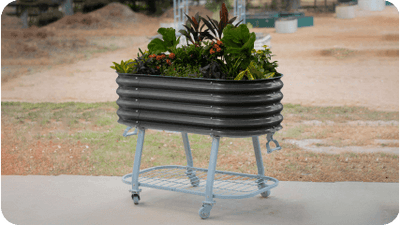








































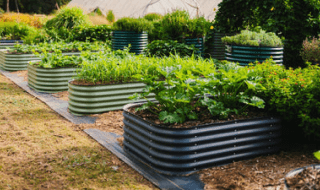
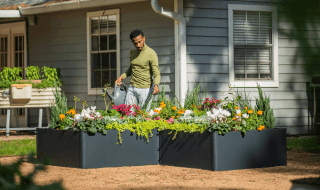
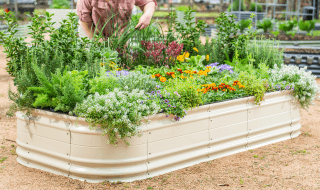
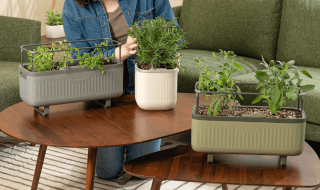
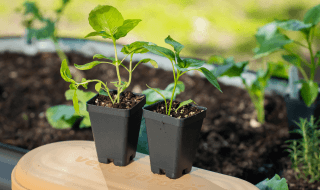
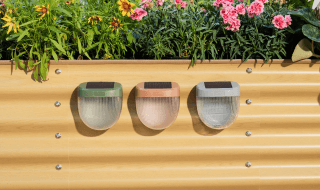
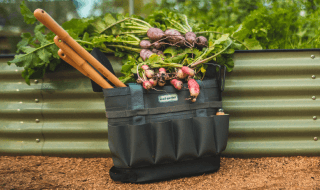
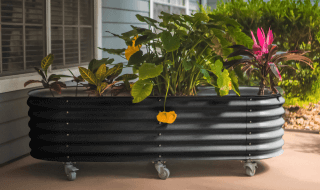







I enjoyed the articles, and they are a good introduction. I’m not sure if I am going to try growing any mushrooms. I do enjoy growing things and I like mushrooms, but my present gardening keeps me more than busy.
Want to learn more about morel mushrooms and starting a harvest bed
Leave a comment